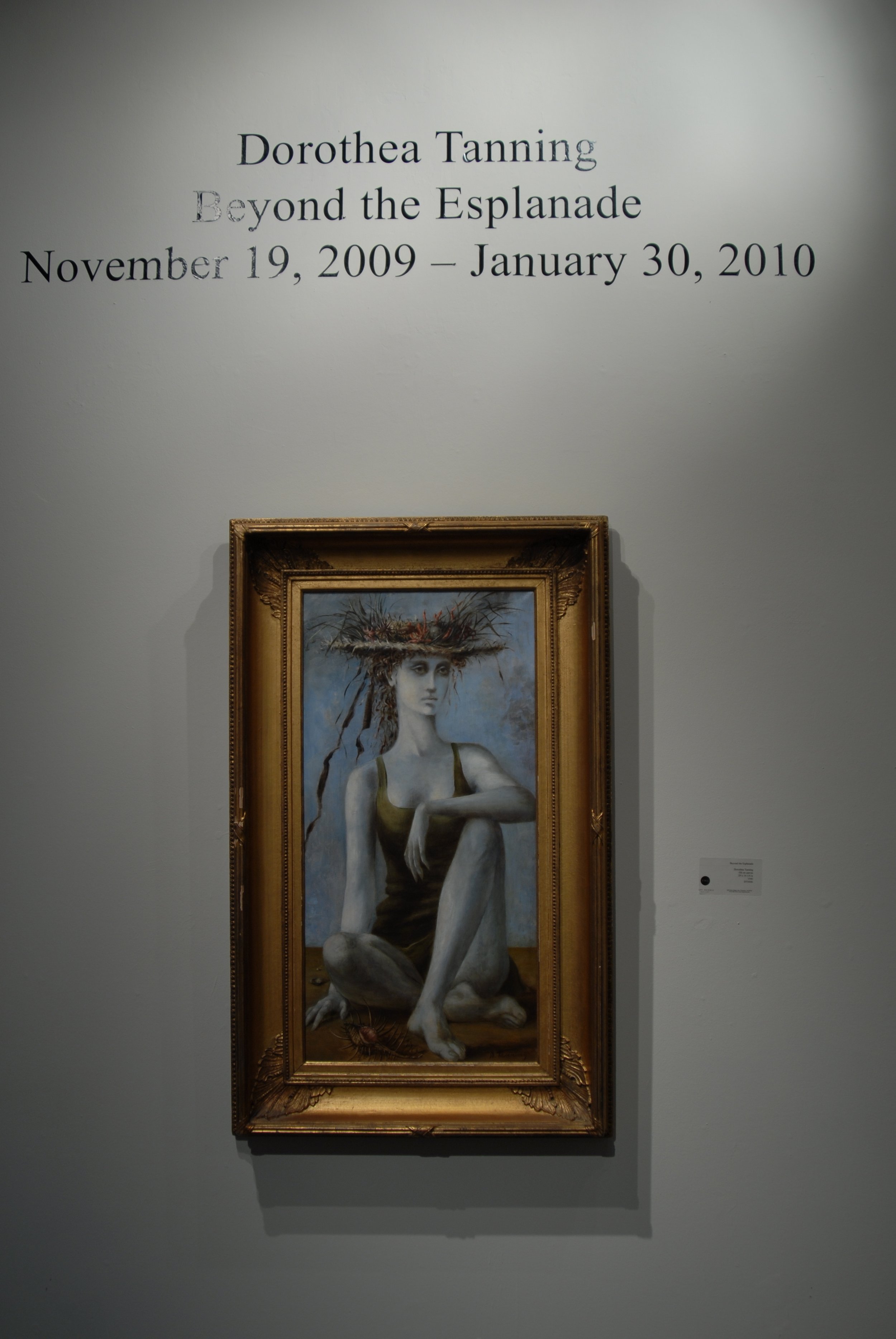

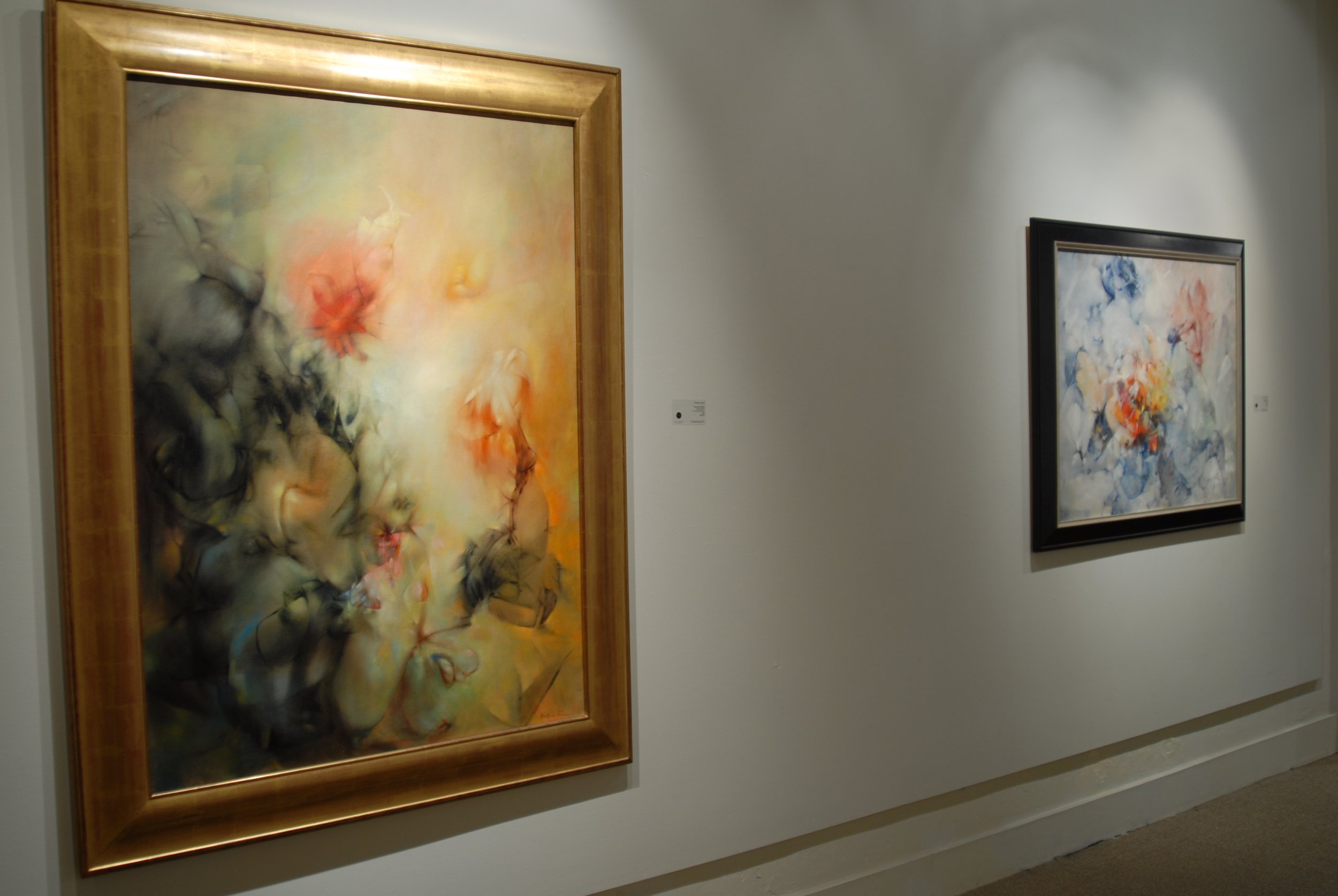
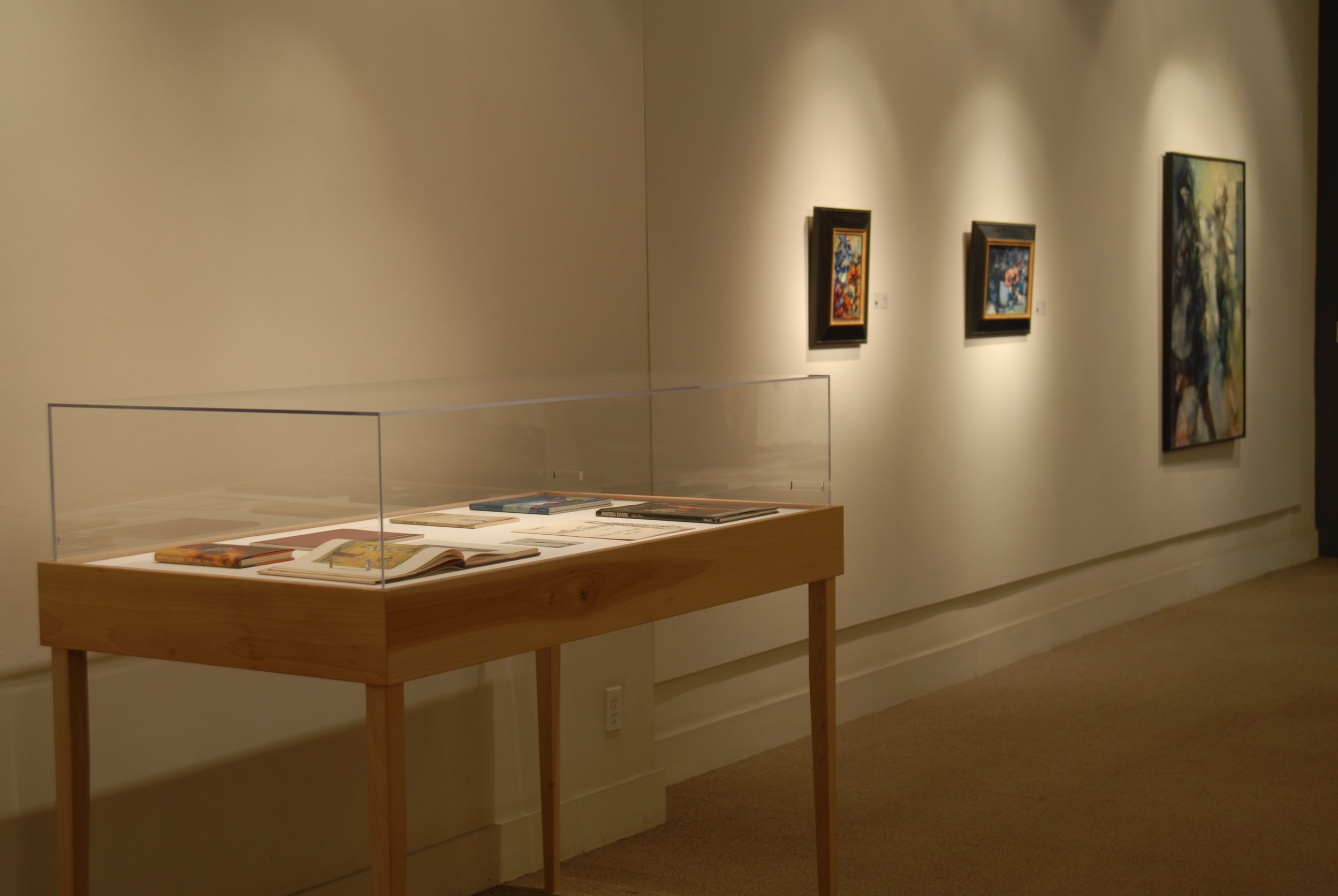

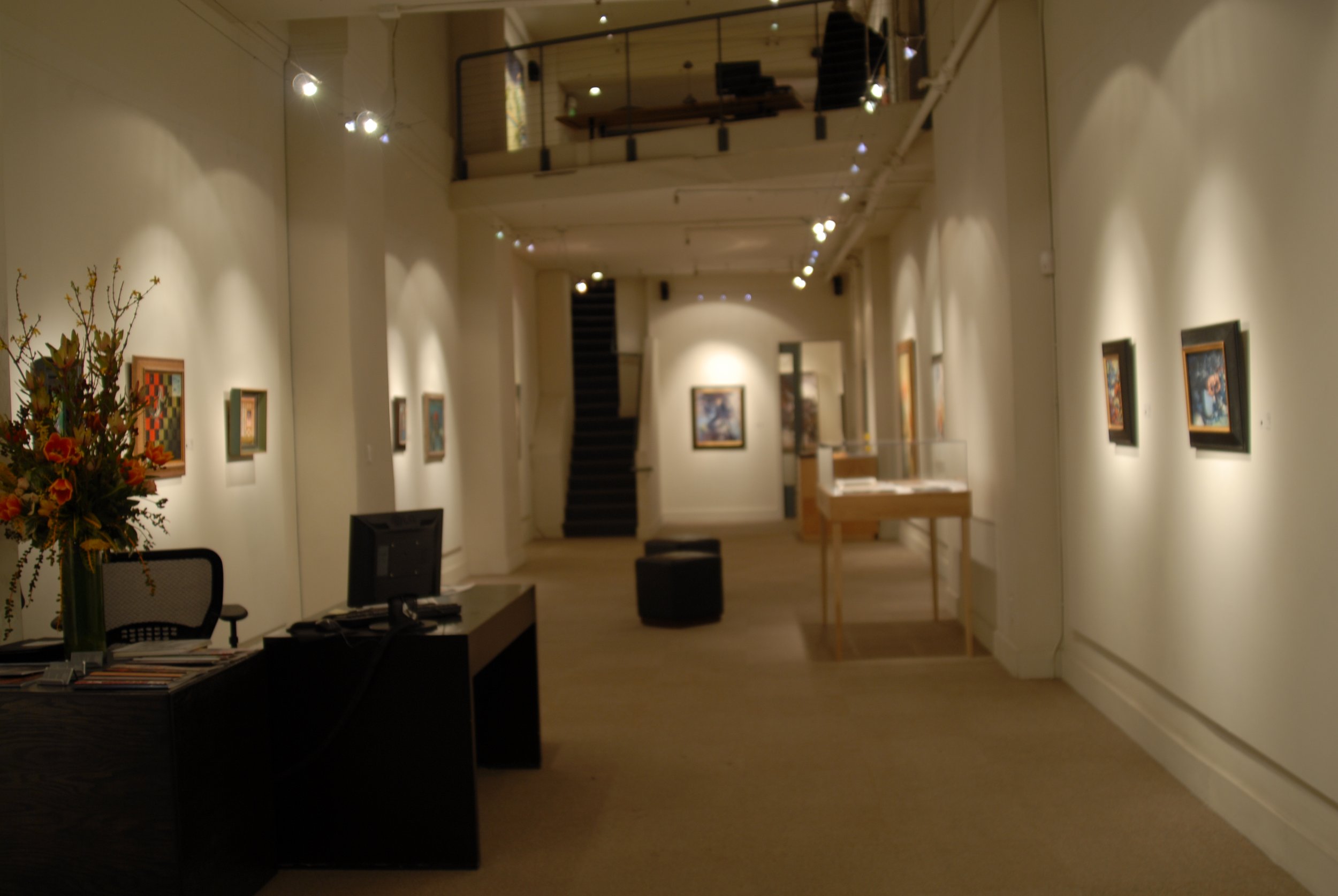
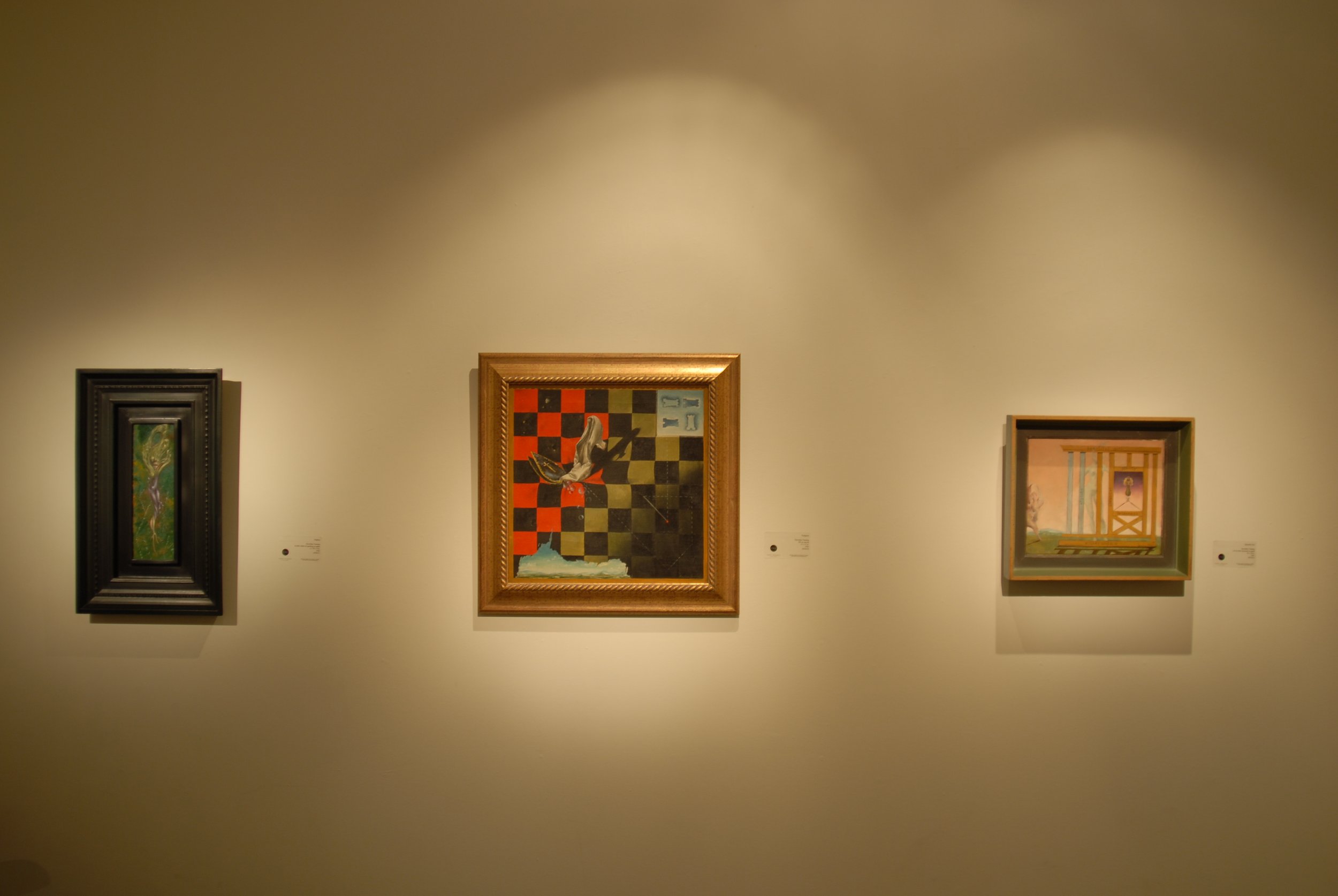
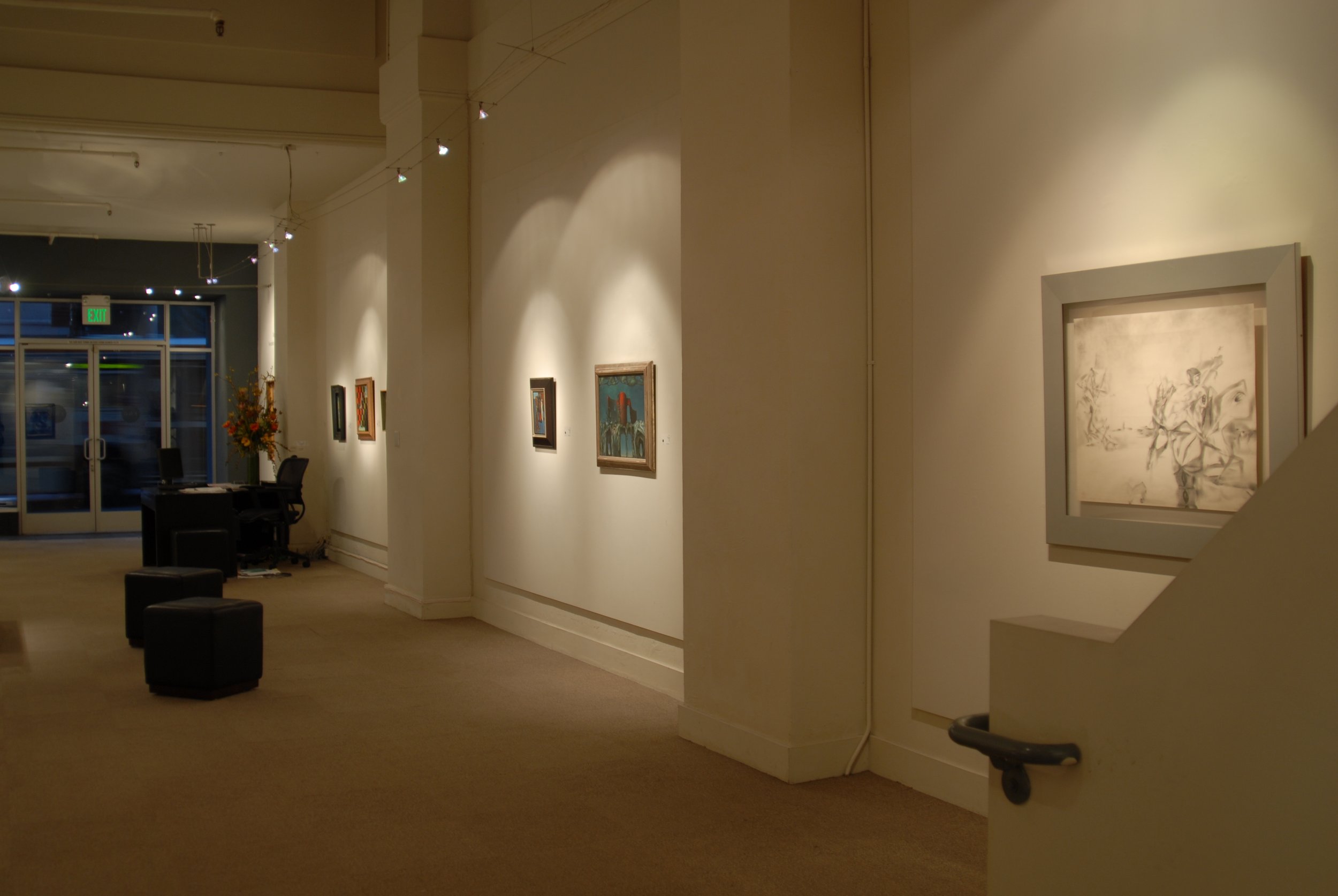



Art has always been the raft onto which we climb to save our sanity. – Dorothea Tanning
SAN FRANCISCO, CA. – Beyond the Esplanade surveys a fascinating period in the career of one of the most intriguing artists and writers of the last century.
After decades of travel and time spent in Sedona, Arizona, and the Loire Valley and south of France, today Dorothea Tanning lives in New York City, the same city where she came to prominence in 1942. That year, Julien Levy, the gallerist who effectively introduced the United States to Surrealism, visited her studio. Levy was so impressed by Tanning's painting Birthday (now in the collection of the Philadelphia Museum of Art), that he quickly offered her a solo exhibition in his eponymous gallery in 1944. This exhibition was well-received and positioned Tanning as one of the more significant artists in the country at the time. As a thinker and artist, Tanning’s life with her husband, the renowned painter Max Ernst, served as the epicenter for encounters and electrifying exchanges with many of the most significant creatives alive. From Joseph Cornell, Truman Capote, Merce Cunningham, George Balanchine, John Cage, and Dylan Thomas to Alberto Giacometti, Joan Miro, and James Merrill, Tanning’s autobiography Between Lives narrates encounters with a wide range of genius.
ABOUT THE ART:
The exhibition's title painting, Beyond the Esplanade (1940), speaks to the strength of will, creative unorthodoxy, and the story of artistic blossoming that would define Tanning’s evolving vision. Through work that cleaves rather closely to Surrealist paradigms of the biomorphic, erotic, and the power of chance association, Tanning matured into a period of prismatic abstraction that calls to mind the shattering of semi-precious gems across the surface of her paintings. In Daphne (1943), Fatala (1947), and The Witch (1949), the intensely self-revelatory and still self-obscuring tones of her signature paintings demonstrate a sharp and witty intelligence struggling with the effects of, and often dismissive assumptions conjured by her own physical beauty. A focus of Amy Lyford’s essay, Endgame (1944) meditates on gender hierarchies with theatrical gestures evolved from a lifelong love of chess. Paintings like Vorace Veracite (1956), Naufrage en rose (1960), Ignotti Nulla Cupido (1960), and Deux mots (1963) epitomize the crushed-velvetlike beauty of the second and third decades of Tanning’s career, a transition from a tone of discomfiting sexuality to embracing a distinct abstract language, one defined by color, hidden imagery and intricacy bolstered by clever poetic titles. Both Deux mots (Two Words) and Naufrage en rose (Shipwreck in Pink) demonstrate the pulsating rhythms this style of painting can evoke when practiced on a larger scale.
Beyond the Esplanade is the most comprehensive look at Tanning's early career to appear in an American gallery since the Philadelphia Museum of Art hosted "Birthday and Beyond" in 2000, to celebrate their acquisition of this seminal work of art.
A 52-page catalogue accompanies the exhibition with an essay by Surrealism scholar and art historian Amy Lyford. Lyford is an Associate Professor of Art History at Occidental College in Los Angeles. Her first book, “Surrealist Masculinities: Gender Anxiety and the Aesthetics of Post World War I Reconstruction in France” was published by the University of California Press in 2007. She is currently completing a second book entitled “Negotiating Labor, Race, and Nation: Isamu Noguchi’s Modernism, 1930 – 1950,” also with the University of California Press.
